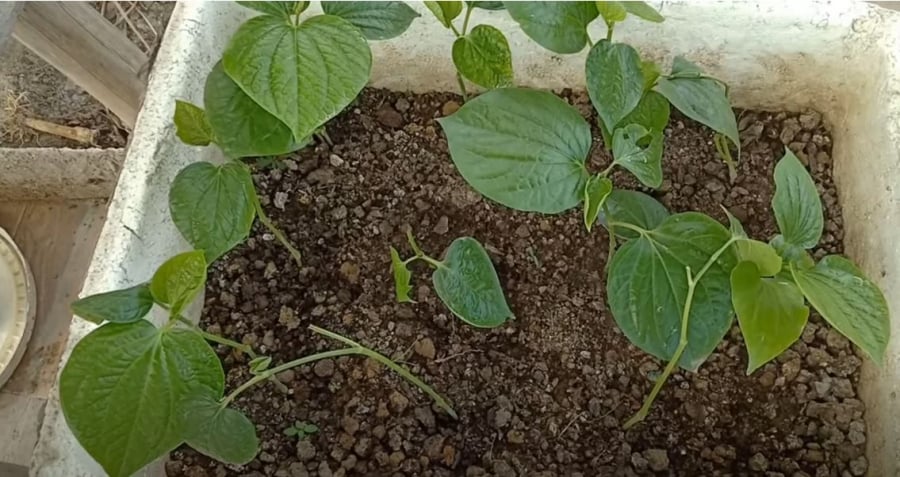Piper lolot is a versatile herb used extensively in Vietnamese cuisine. It can be used to make delicious dishes such as grilled beef wrapped in piper lolot leaves, snail soup, or banana blossom soup. The leaves can also be used for herbal baths and foot soaks.
Propagating piper lolot is straightforward. Here’s how you can do it:
Soil for piper lolot
Piper lolot is a hardy plant that can grow in various soil types. However, for optimal growth and lush, green leaves, it is best to use soil rich in organic matter and nutrients. You can either purchase ready-made soil or enhance regular soil by mixing it with well-rotted cow manure, chicken manure, worm castings, rice husks, peat moss, and coconut coir. Remember to lime the soil and let it cure for 7-10 days before planting to eliminate any potential pathogens.
Selecting Cuttings

Propagate piper lolot through cuttings.
Piper lolot is typically propagated through cuttings. Select healthy, vibrant branches with large, glossy leaves and cut them into 20-30 cm long segments.
Planting Process
When cutting the branches, use a sharp knife or scissors to minimize damage to the cutting. If you have root-stimulating solution, you can soak the cuttings in it before planting. Insert the cuttings into the prepared soil, ensuring that about 2/3 of the cutting is buried. Gently firm the soil around the cutting to keep it upright, and then water lightly to provide moisture.

Simply insert the piper lolot cutting into the soil, and roots will develop, forming a new plant.
Water the cuttings twice a day for the first 15 days, and then reduce the frequency to every 2-3 days, depending on the weather conditions. Piper lolot grows rapidly and requires minimal care. Consistent watering is essential to ensure lush leaves.
When harvesting, simply pluck the leaves as needed, leaving the stem intact for new leaf growth. Alternatively, you can cut the stem, leaving about 10-15 cm from the base to encourage regrowth. Harvest the leaves from the base upwards. It is best to harvest in the early morning or late afternoon to avoid the harsh midday sun, as this can cause the leaves to wilt.
Piper lolot is rarely bothered by pests and diseases, so you don’t need to worry about that aspect. Just remember to weed regularly and mound the soil around the base of the plant.
After each harvest, you can apply organic fertilizers such as worm castings, cow manure, or goat manure to promote new leaf growth.
With proper care, your piper lolot plant should be ready for harvest within a month of planting.
The Reluctant Bougainvillea: Tricks to Get Your Vine Blooming
Bougainvillea is a vibrant and vibrant plant, with its bright and vibrant colors, it is a popular choice for home gardeners looking to add a splash of color to their outdoor spaces. This sun-loving plant is a year-round bloomer, provided it is cared for properly. With its vibrant hues and free-flowing growth, it is a versatile plant that can transform any garden into a vibrant, colorful paradise.




































